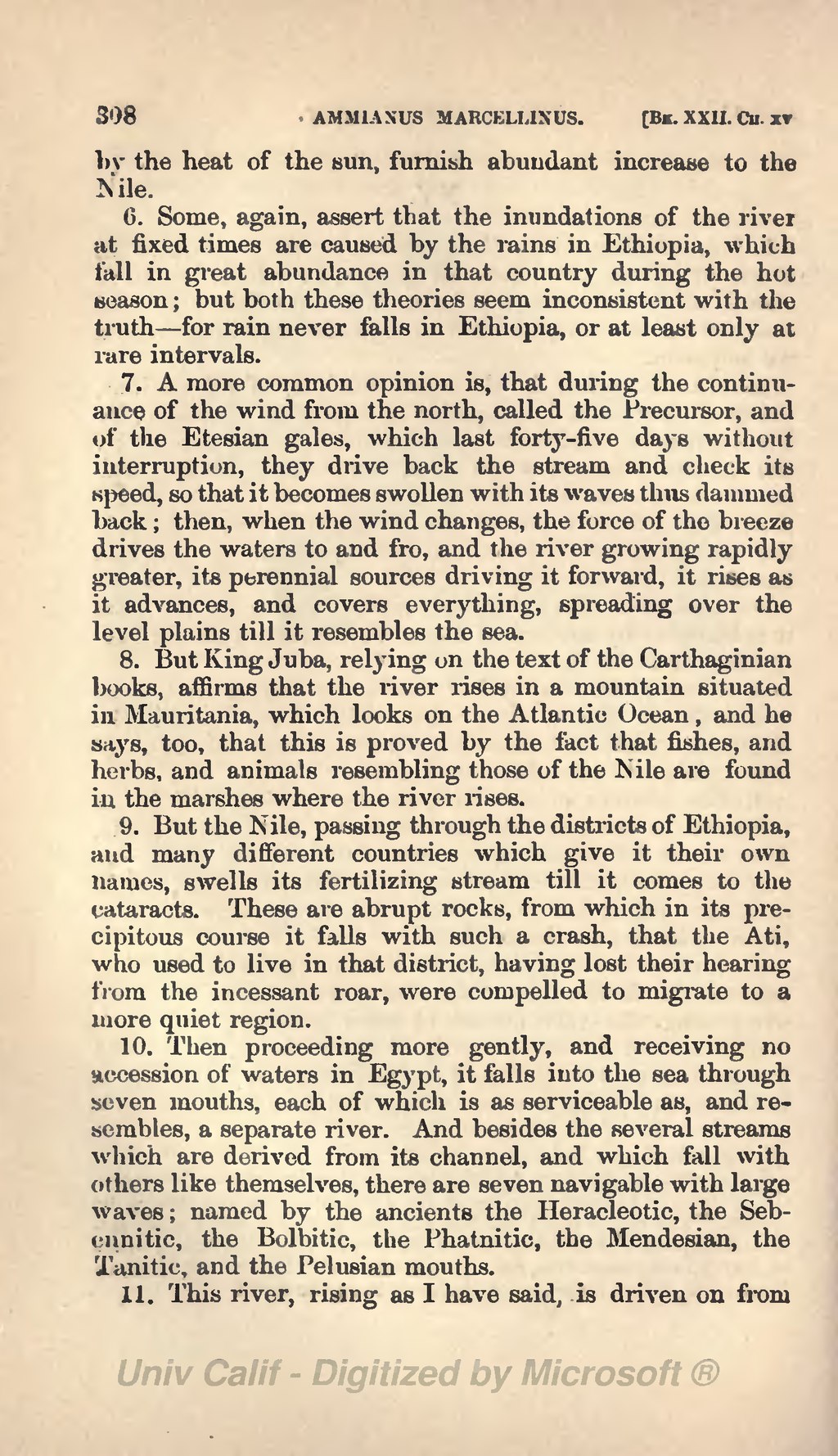the heat of the sun, furnish abundant increase to the Nile.
6. Some, again, assert that the inundations of the river at fixed times are caused by the rains in Ethiopia, which fall in great abundance in that country during the hot season; but both these theories seem inconsistent with the truth—for rain never falls in Ethiopia, or at least only at rare intervals.
7. A more common opinion is, that during the continuance of the wind from the north, called the Precursor, and of the Etesian gales, which last forty-five days without interruption, they drive back the stream and check its speed, so that it becomes swollen with its waves thus dammed back; then, when the wind changes, the force of the breeze drives the waters to and fro, and the river growing rapidly greater, its perennial sources driving it forward, it, rises as it advances, and covers everything, spreading over the level plains till it resembles the sea.
8. But King Juba, relying on the text of the Carthaginian books, affirms that the river rises in a mountain situated in Mauritania, which looks on the Atlantic Ocean, and he says, too, that this is proved by the fact that fishes, and herbs, and animals resembling those of the Nile are found in the marshes where the river rises.
9. But the Nile, passing through the districts of Ethiopia, and many different countries which give it their own names, swells its fertilizing stream till it comes to the cataracts. These are abrupt rocks, from which in its precipitous course it falls with such a crash, that the Ati, who used to live in that district, having lost their hearing from the incessant roar, were compelled to migrate to a more quiet region.
10. Then proceeding more gently, and receiving no accession of waters in Egypt, it falls into the sea through seven mouths, each of which is as serviceable as, and resembles, a separate river. And besides the several streams which are derived from its channel, and which fall with others like themselves, there are seven navigable with large waves; named by the ancients the Heracleotic, the Sebennitic, the Bolbitic, the Phatnitic, the Mendesian, the Tanitic, and the Pelusian mouths.
11. This river, rising as I have said, is driven on from the
